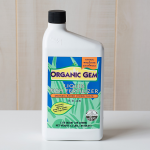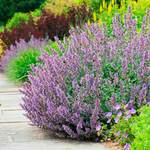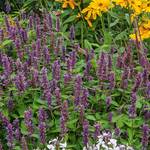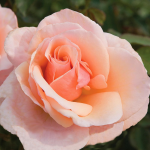Product Details
Even the novice Rose grower will have great success with the easy-care, compact 'Lady of Shalott' Shrub Rose hybridized by David Austin. This Rose is highly fragrant and bears clusters of chalice-shaped blooms in a delightful symphony of apricot, salmon pink, and pale yellow—pure romance. A continuous bloomer with proven disease resistance. An American Garden Rose Selections™ winner. Own-root. 'AUSnyson' PP 22,171
For beauty and fragrance the rose knows few rivals. Roses have been cultivated for centuries; there are thousands of cultivars available and, often, an accompanying thicket of taxonomical jargon. Don’t worry about the terminology – the roses we elect to offer were chosen for their beauty, disease-resistance and vigor. Whether you’re looking for a rangy climber to run up a pergola or a petite specimen for a particular spot in the garden, we very likely have a variety to suit.
Roses require 6 or more hours of direct sun per day and fertile, reasonably moist soil. They benefit from an occasional feeding during the growing season. For more information on Rose care, please see the Growing Guide tab on this page.
Tip: We use Organic Gem® as a foliar feed on Rose bushes in our trial garden and find plants are healthier and perform better throughout the season.
Shipping
HOW PLANTS ARE SHIPPED
The size of the plants we ship has been selected to reduce the shock of transplanting. For some, this means a large, bareroot crown. Others cannot travel bareroot or transplant best if grown in containers. We ship these perennials and annuals in 1 pint pots, except as noted. We must point out that many perennials will not bloom the first year after planting, but will the following year, amply rewarding your patience. We ship bulbs as dormant, bare bulbs, sometimes with some wood shavings or moss. Shrubs, Roses, vines, and other woody plants may be shipped bareroot or in pots. The size of the pot is noted in the quick facts for each item.
WHEN WE SHIP
We ship our bulbs and plants at the right time for planting in your area, except as noted, with orders dispatched on a first-come, first-served basis by climate zone. We also ship a wide range of containers and planters, tools, supplies, fertilizers, garden wear, garden decor items, as well as indoor decorations like wreaths and dried bouquets when available. Estimated dates for shipping are indicated in the green Shipping Details box for each item. Please supply a street address for delivery. Kindly contact us with two weeks notice, if you'll be away at the expected time of delivery.
OUR GUARANTEE
We guarantee to ship plants that are in prime condition for growing. If your order is damaged or fails to meet your expectations, we will cheerfully replace or refund it. Please contact our Customer Service Department at 1-800-503-9624 or email us at [email protected]. Please include your order number or customer number when contacting us.
Reviews
Average Customer Rating:
 (7 Reviews)
Write a Review
(7 Reviews)
Write a Review
Sort by:
Definitely a keeper 
A viewer from Central Massachusetts
Lovely fragrant rose 
A viewer from Huntsville Alabama
Doesn't survive in Chicago 
Dave from Huntley, IL
This is supposed to hardy in Zone 5 (north of the Chicago area) but doesn't seem to be hardy in the Chicago area.
Growing guide
Latin Name Pronunciation: roe'zuh
Today's Roses are easier to grow than you might expect.
- The basic needs for Roses include plenty of direct sun,6 hours or more, and fertile, well-drained soil.
- Roses tolerate a range of soil types (from sand to clay), as long as a little care is taken to prepare the soil at planting time.
We offer both own-root and grafted Roses.
- Own-root Roses are plants grown from cuttings. They have their own root systems and remain true to the original varieties.
- Grafted Roses are plants that have vigorous rootstocks fused to the top parts of other Roses that are valued for their flowers.
Planting Bareroot Roses:
- Before planting a bareroot Rose, remove and discard the packing material and soak the roots for a few hours.
- Dig a planting hole that allows sufficient room for the depth and spread of the roots.
- Add organic matter—such as compost or aged manure—and mix this into the soil dug from the hole.
- Set the plant in the hole so that the top of the graft, or the crown of own-root Roses (the point where the stems of the plant meet the roots), is 3" below soil level in the North, and at the same level or 1" above where winters are mild.

- Push the mix of soil and organic matter back into the hole, tamping firmly as you go. Water thoroughly.
- Add a generous layer of organic mulch (compost or aged manure is best) to help keep the soil evenly moist.
- Water thoroughly once every 2 weeks if rainfall is scarce throughout the growing season and into fall.
Planting Potted Roses:
- Check the moisture of the potting mix in the container and, if dry, water thoroughly.
- Dig a hole wide enough and just deep enough for the root ball.
- Add organic matter—such as compost or aged manure—and mix this into the soil dug from the hole.
- Remove the plant from the container and gently break up the sides of the root ball with your thumbs and carefully untangle any roots circling at the bottom.
- Set the root ball in the hole so that the top of the root ball is level with the surface of the surrounding soil.
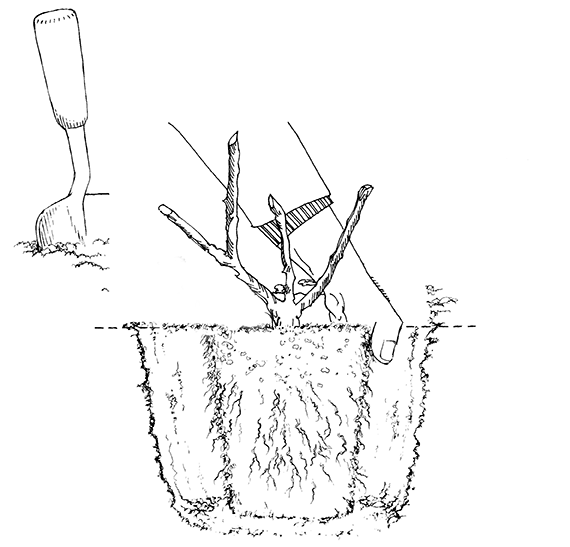
- Push the mix of soil and organic matter back into the hole, tamping firmly as you go. Water thoroughly.
- Add a generous layer of organic mulch (compost or aged manure is best) to help keep the soil evenly moist.
- Water thoroughly once a week if rainfall is scarce during the growing season and throughout fall.
Rose Care
Best time to plant Roses: Roses are best planted in spring or fall when mild temperatures encourage the plants to develop root systems. We ship Roses for both spring and fall planting with our broadest selection available in spring. To ensure successful planting of any type of Rose, simply follow the easy guidelines laid out in our Grow Guides, which can be found on our website, on the product page for each Rose variety. The guidelines include light requirements, optimal soil conditions, ideal planting depth, and Rose Care tips to include watering, pruning, end-of-season care, and more. We do not recommend planting Roses in summer because the season’s high temperatures can stress the plants, urging them to push growth above ground before they have had sufficient time to establish supportive root systems.
Light: Roses grow best where they receive at least 6 hours of direct sun per day.
Watering: We recommend watering in the morning if possible so that the foliage doesn’t remain wet into the evening. If the weather is dry, water thoroughly every 2 weeks.
Fertilizer: Roses grow more vigorously, bloom more prolifically, and show greater resistance to diseases if fertilized during the growing season.
- For best results, add a layer of compost or aged manure in early spring around the base of the plant. After the first wave of bloom, apply a bloom-boosting fertilizer (15-30-15).
- For organic gardeners, we recommend adding a layer of compost or aged manure in early spring and applying an organic fertilizer after the first wave of bloom.
Pests & Diseases: The Roses we offer are selected for their vigor and their resistance to pests and diseases.
- Some Roses are prone to fungus problems (such as black spot) in hot, humid areas. Cleaning up old foliage from the base of the plant is important for disease control.
- We recommend the use of environmentally-friendly horticultural oil and insect sprays listed by the Organic Materials Review Institute (OMRI).
- Japanese beetles may be handpicked or a systemic pesticide may be used. In spring, check for Rose slugs (sawfly larvae that appear as tiny, green caterpillars and skeletonize Rose foliage) and physically destroy them or spray with superfine horticultural oil.
Pruning: Prune Roses to remove deadwood, to control or direct growth, and to promote flowering.
- Wait until growth breaks from the canes in early to mid-spring before pruning.
- To train climbers in early spring, trim thinner side shoots from the base of the main branches. Attach new stems to their supports throughout the growing season.
- If the Rose bush has become too tall, the stems may be cut back by one-third to one-half in early spring or after the first wave of blooms.
- With the exception of the rugosas, which produce attractive hips (fruits), remove the spent flowers of reblooming Roses to promote more bloom.
Transplanting: Roses may be moved in early spring when dormant.
End-of-Season Care: In our experience, the best way to get Roses through winter is to choose plants adapted to your climate zone.
- Mound 2 shovelfuls of bark mulch around the base of the plant before the start of winter. This added layer of protection is especially important for grafted Roses.


